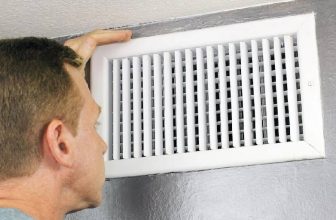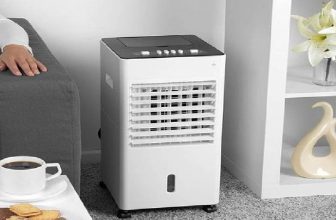How to Redirect Airflow From Window AC
Introduction
Everyone would like to have a cool room when it is hot outside. During this time, we sometimes use the AC of our homes to make us feel more comfortable. But did you know that not all of the air from your AC goes into your room? If you live in an old house, some of the air from your AC may go out through windows because there is leakage in your house’s walls.
Once you turn on the AC and try to use it, much of the cold air will be wasted with no gain at all. There are several ways for you to redirect airflow coming from your Window AC back toward people or stuff in your room to solve this problem. Today, I am going to discuss some tips on how to redirect airflow from window AC. So, let us get into the topic.
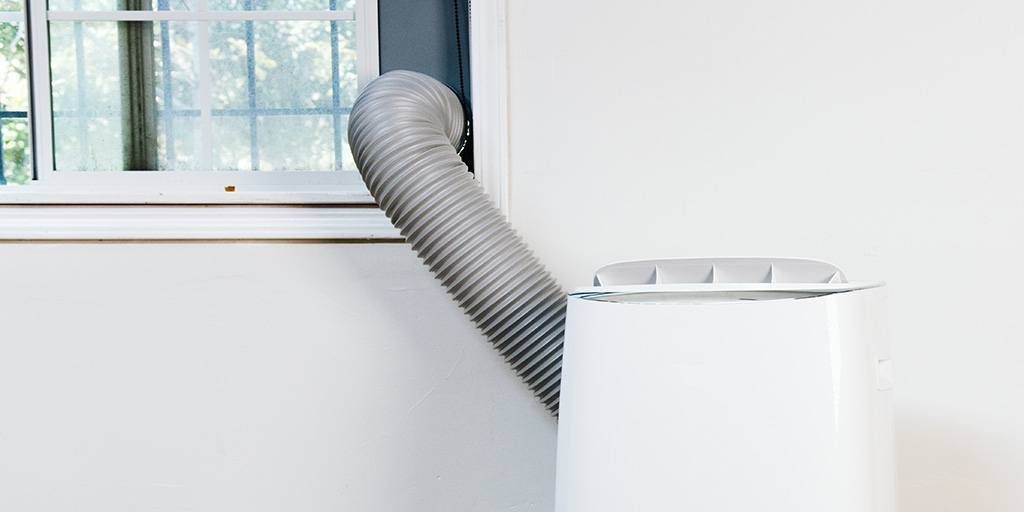
What is Window AC?
Window AC is a type of air conditioner that is designed to be installed in a window or through a hole in the wall of a room. It comes with a compressor and condenser, which are placed outside the house, and an evaporator and fan, which are placed inside the room. Window ACs are commonly used in small spaces or single rooms, making them a popular choice for apartments, dorm rooms, and smaller homes.
You may have noticed that when you turn on your Window AC, the cold air blows directly towards the window. This is because the placement of the fan and evaporator is designed to expel air in one direction. However, as mentioned earlier, this can be a problem if there are leaks in your walls or windows, causing cold air to escape instead of cooling your room. It can also be uncomfortable if you are sitting or working next to the window, as you will constantly feel a draft of cold air.
Pros and Cons: Redirecting Airflow from Window AC
Redirecting the airflow from your Window AC has its own set of advantages and disadvantages. Let’s look at some of them below.
Pros:
Efficient Cooling:

By redirecting the airflow, you can ensure that all the cold air stays inside your room, making it more efficient in cooling your space. This can also save you money on your electricity bill, as the AC won’t have to work as hard to cool the room.
Comfortable Living Space:
Redirecting the airflow can also create a more comfortable living space, as you won’t feel a constant draft of cold air blowing on you. This is especially useful if your sitting or working area is near the window.
Reduced Noise:
Some people find the sound of an AC fan to be too loud and disturbing. By redirecting the airflow, you can reduce the noise levels in your room, making it more pleasant to be in.
Cons:
Installation and Maintenance:
Redirecting the airflow from your Window AC may require some additional installation and maintenance work. This can be time-consuming and may also incur extra costs.
Uneven Cooling:
Depending on the placement of your redirected airflow, you may experience uneven cooling in different parts of the room. This can be a problem, especially if you have a larger space that needs to be cooled evenly.

Risk of Damaging Window AC:
Improperly redirecting airflow can also cause damage to your window AC, as it may not be designed to handle redirected airflow. This could lead to malfunctions and additional costs for repairs.
Why is Redirecting Airflow Important?
Redirecting airflow from your Window AC is important because it ensures that all of the cold air produced by your AC stays within the room. By redirecting airflow, you can prevent energy wastage and save on your electricity bill. Additionally, redirecting airflow can help to evenly distribute cool air throughout the room, making it more comfortable for everyone.
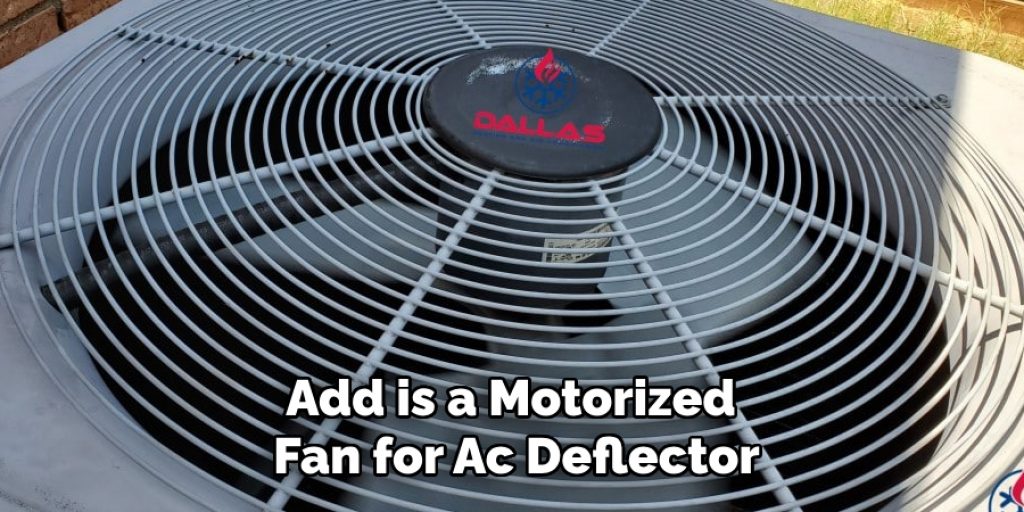
You may also want to redirect airflow if you have certain objects or furniture in the room that could block the flow of cool air. By redirecting airflow, you can ensure that these objects are not affected by the cold air and remain at a comfortable temperature.
You can also consider redirecting airflow if you live in a hot and humid climate, as it can help to cool down your room faster and more efficiently.
A Guide on How to Redirect Airflow From Window AC
Option 1:
You can use an air deflector(from a Home Depot or Lowe’s) to redirect airflow from your Window AC. To do this, you hang the air deflector in front of the outlet on your Window AC. Airflow will be redirected into the room so you can feel cool and comfy while using your AC.
Option 2:
If you are handy with tools, you may also make an air deflector yourself by using some wood. Place a board in front of the outlet on your window AC, and then attach a round mesh sheet onto it using thin metal wires. Securely fasten them together for best results. To improve its effectiveness, stick more foam sheets around the edges of this homemade air deflector to ensure that it will work as well as possible.
Option 3:
To redirect airflow coming out of your Window AC, you may also add a plastic cover onto the outlet where cold air comes out from. This object should fit tightly into the outlet so that air will have no way of escaping through gaps or holes in between the object and the outlet.
Option 4:

You can use a cardboard box to divert airflow from your Window AC. First, cut an L-shaped piece at one end of the box, then stick it into one of the side openings in front of your window AC outlet. You may want to tape it down to prevent it from moving after cutting some holes at both ends for better breathability. Since cardboard is porous, air will be able to go out through the box and into your room in time.
Option 5:
You can also have a more advanced option with this one by adding some more features to your homemade AC deflector. One thing that you may want to add is a motorized fan. Find a cheap portable fan from there or anywhere else, then attach it to your box using zip-ties or other kinds of ties. To redirect airflow coming out of your Window AC, turn on the fan so that cold air leaks into your room as well. Another way for you to direct airflow is by installing vents at the four corners of the top surface of this box. By doing so, you can place an oscillating fan that has the ability to redirect airflow toward every corner of your room.
Option 6:
You can also try out this option to redirect the airflow coming out from your window AC. First, get a metal plate and cut some holes in it so that air will be able to go through as well. Next, buy some gasket material (from Home Depot) or an old ring belt and install them around the edges of the plate to prevent any leakage into your room. Make sure that there are no spaces between these gaskets and the plate. Last but not least, you may want to add a layer of foam on top of those gaskets to ensure better breathability while using AC.
Option 7:
This is probably one of the cheapest solutions out there, and it is also one of the most effective ones. Trying to redirect airflow coming from your Window AC? Add a plastic cover over its outlet. This will ensure that air leaking will be directed into your room rather than just going anywhere else. You may also use some clips to fasten the plastic cover onto your window AC outlet. If you don’t have a plastic cover, you may use some cardboard instead. Just cut it into a shape the same size as your window AC outlet, then stick it onto the outlet using tape or other types of adhesive materials.
Precautions While Performing How to Redirect Airflow From Window AC:
1) Ensure that the window AC is not turned on when doing this process, as it can cause damage to your electronic items.

2) Always use good-quality ducting along with tape. Sometimes, we have seen taping done so badly that the duct gets damaged while removing it from the wall. The malfunctioning of your electronic devices cannot be attributed to me, so please make sure that you are using the correct ducts and tapes for the job.
3) If there is any chance of water seepage through cracks or leakage of coolant, try to seal them first. The plaster will do just fine at times. Also, ensure the drainage hole is free from any obstruction like mud particles, etc., it may result in water accumulation and failure of your electronic devices.
4) While removing the AC from the wall, check for any electric wiring or plumbing pipelines nearby. Again, it is better to make sure that these things are not damaged in any way while pulling off the AC.
5) There is a chance of gas leakage, like hydrogen or chlorine, during this process. So it is always recommended to do this step in a well-ventilated area (don’t say I didn’t warn you). Remember, any gas leak inside your house can be really disastrous. You never know when your domestic animals may start acting weirdly if exposed to these gases.
6) This method should only be used if necessary; otherwise, it defeats the purpose of having a window AC.
7) The duct must be sealed very carefully by the person carrying out this process. If any air leakage is noticed while doing this job, it should not be done because it just defeats the purpose, and you may end up with a stuffy room that can even threaten your health if the excessive accumulation of moisture happens.
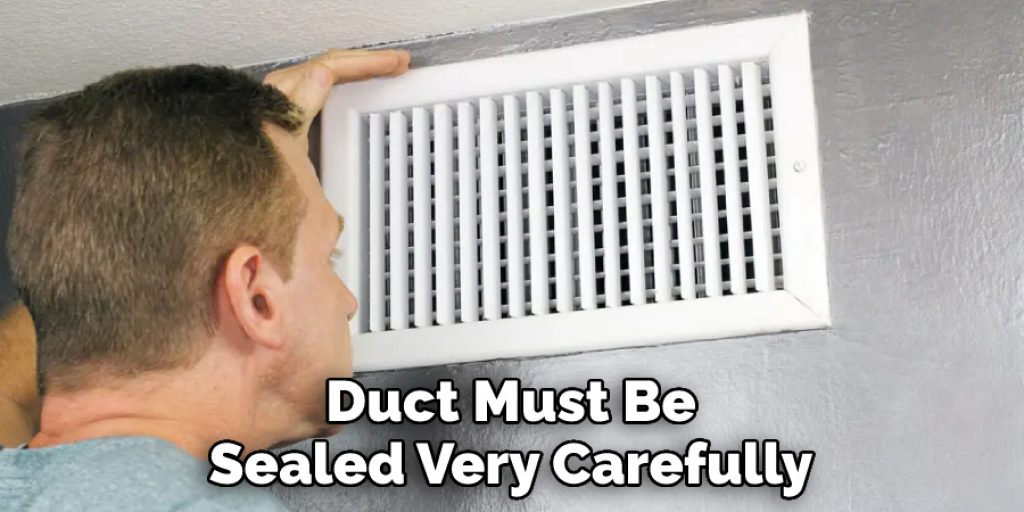
8) Ensure that there is no single sharp object like a nail or screw stuck near the place where you are planning to put in the new ducting. These sharp objects may damage the ducts while pulling them out. Plus, they can also cause harm to you.
9) Wear protective gear like gloves and masks while doing this job. It is important to protect yourself from any harmful particles or materials that may be present during this process.
10) Lastly, if you are unsure about performing this task on your own, it is always best to seek professional help. This will ensure that the process is done correctly and safely without any risks or damages. So, weigh your options carefully before attempting this task on your own. Safety should always be a top priority. Stay safe and cool! Happy redirecting!
Tips:
- Regularly check for any cracks or leaks in the ducting to ensure proper airflow.
- Use high-quality materials such as sturdy ducting and strong tape to prevent any future issues.
- Keep the area around your window AC clean and free of obstructions to maintain efficient airflow.
- If you notice any strange smells or noises coming from your window AC, immediately turn it off and seek professional help.
- Consider investing in a new window AC if your current one is not functioning properly or is causing issues even after trying various redirection methods. It may save you time, money, and effort in the long run. Plus, newer models may have built-in features for redirecting airflow.
- Remember to always prioritize the safety and proper maintenance of your window AC to prolong its lifespan and ensure efficient cooling.
- Have fun trying out different methods of redirecting airflow from your window AC to find the one that works best for you and your room. Experiment with different materials and techniques to achieve the most effective results.
- Don’t forget to regularly clean and maintain your window AC to maximize its cooling capabilities and prevent any potential issues.
- Consider consulting with an HVAC professional for more personalized and specific advice on how to redirect airflow from your window AC, especially if you have a complicate setup or are unsure of how to proceed. They may also provide valuable tips and recommendations for maintaining your window AC.
Frequently Asked Questions:
What is a Window AC Airflow Deflector?
A window AC airflow deflector is a plastic or metal hinge that attaches to the window frame and allows you to redirect, adjust, and re-direct your window air conditioner’s cold airflow. An airflow deflector is great because if you get tired of running air in front of your face or constantly blasting the ceiling fans with cold air, you adjust it so that the flow travels instead of at waist height in a more comfortable and cooler environment for everyone.
How Does a Window Air Conditioning Deflector Work?
An AC airflow deflector is used to redirect and change the direction of airflow from your home’s indoor air conditioning unit. They can be installed on any standard-size Windows AC unit. It helps focus the cooling area in one direction to blow throughout an entire room as central air does. Instead, window AC units cool down rooms by blowing out hot air trapped inside a room into vents outside the house to be released into the outdoors. The air discharges directly out of the window to create a cooling effect on a home’s outdoor areas. A deflector helps make this cool air more accessible in the room and extends its coverage.
Why Should I Redirect Airflow From My Window AC?

As mentioned earlier, redirecting airflow from your window AC can help to save energy, evenly distribute cool air throughout the room, and make it more comfortable for everyone. It can also help to cool down your room faster and more efficiently, making it a great solution for those living in hot and humid climates. You can also redirect airflow to protect sensitive objects in your room from being affected by the cold air or to prevent direct airflow on yourself while you sleep.
Can I Redirect Airflow From My Window AC on My Own?
Yes, there are various DIY options available for redirecting airflow from your window AC. These include using air deflectors, homemade deflectors made from wood or cardboard, and installing a plastic cover or metal plate over the outlet. However, if you are not handy with tools or prefer a more advanced solution, you can also consider purchasing a pre-made airflow deflector specifically designed for window AC units.
Is Redirecting Airflow Safe for My Window AC?
Redirecting airflow from your window AC is generally safe as long as you follow proper installation instructions and do not obstruct the unit’s air intake or outlet. However, it is always best to consult with a professional if you are unsure about any modifications made to your AC unit. Additionally, make sure that the deflector or cover used does not create any safety hazards, such as blocking emergency exits or creating a fire hazard. Overall, redirecting airflow can be a cost-effective and efficient way to improve the performance of your window AC unit and make your living space more comfortable.
Conclusion:
I hope this article on how to redirect airflow from window AC helped you out in some way! If you like it, don’t forget to share it with your friends and family! Always keep your safe while operating electric types of machinery while performing the process. Thank you, and best of luck!
You Can Check It Out to Reduce Airflow From Air Pump
You may read also –



